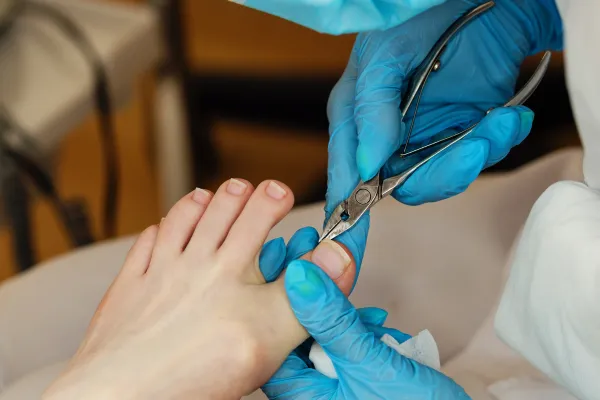
How Toenail Reconstruction Helps with Foot Health: Beyond Cosmetic Appearance
Toenail reconstruction is often thought of as purely a cosmetic procedure, but its benefits extend far beyond just improving the appearance of your nails. Whether caused by injury, infection, or a medical condition, reconstructing a damaged or missing toenail can play an important role in your overall foot health.
What is Toenail Reconstruction?
Toenail reconstruction involves the restoration of a damaged or lost toenail using advanced materials, such as medical-grade acrylics or other biocompatible substances. This procedure is especially beneficial for those who have lost their toenail due to trauma, fungal infections, or conditions like psoriasis or diabetes. A podiatrist will carefully reconstruct the nail to restore both its function and appearance, offering patients an aesthetic solution that also addresses underlying foot health concerns.
The Role of Toenail Reconstruction in Foot Health
While it’s easy to think of toenail reconstruction as just a way to make the foot look better, the process provides several health-related benefits that are essential for long-term foot well-being.
1. Protection of the Toe
One of the most important functions of a toenail is to protect the sensitive skin of the toe. A healthy toenail serves as a barrier, preventing dirt, bacteria, and other pathogens from entering the toe and causing infections. When the toenail is lost or damaged, the exposed toe becomes vulnerable to injury and infection. Toenail reconstruction provides a protective cover, helping to shield the toe from environmental threats.
2. Prevention of Further Complications
A missing or damaged toenail can cause alignment problems and affect the way you walk. Without a toenail, you may unconsciously alter your gait to compensate for the discomfort or instability, which could lead to issues with posture, joint pain, or muscle strain. By restoring the toenail, reconstruction helps maintain normal foot mechanics and reduces the risk of developing secondary issues like corns, calluses, or hammertoes.
3. Improved Comfort and Functionality
Toenail reconstruction helps improve comfort by restoring a natural and even surface on the toe. If your toenail is deformed, missing, or damaged, the skin underneath can become irritated from constant friction, leading to discomfort or even pain while walking. A reconstructed toenail provides a smooth, uniform surface, alleviating irritation and pressure, and allowing you to wear shoes more comfortably.
4. Restoring the Nail’s Natural Growth and Structure
In cases where toenail damage is caused by fungal infections or trauma, reconstructing the toenail can help restore its natural growth pattern. This is especially important for individuals who have experienced chronic nail damage, as the reconstructed nail can allow the nail bed to heal properly and begin producing a healthier nail once again.
5. Improved Self-Esteem and Confidence
While the health benefits are paramount, toenail reconstruction also plays a vital role in improving self-esteem. For many people, the appearance of their toenails can have a significant impact on their overall confidence. Missing or damaged toenails may make individuals self-conscious, especially during the summer months when sandals and open-toed shoes are more common. Rebuilding the toenail restores a more natural, aesthetically pleasing look, which can positively affect a person’s mental and emotional well-being.
6. Preventing Further Nail Damage
In some cases, patients may suffer from conditions like fungal infections or psoriasis, which can lead to chronic nail damage. Reconstructing the toenail not only restores appearance but also helps to reduce the recurrence of these issues. For example, reconstructing a toenail after a fungal infection ensures that there is no space for the infection to continue spreading to the nail bed, leading to healthier and more stable nails in the future.
When is Toenail Reconstruction Necessary?
Toenail reconstruction may be necessary when:
You’ve lost a toenail due to injury or infection.
Your toenail has been permanently deformed due to fungal infections or medical conditions.
You experience chronic pain, irritation, or discomfort caused by a damaged toenail.
You want to restore the function and aesthetics of your foot following nail trauma or health complications.
How the Procedure Works
The toenail reconstruction procedure typically involves the use of a special acrylic or gel material, which is molded to replicate the shape and texture of a natural toenail. A podiatrist will carefully apply this material, ensuring it fits snugly to the nail bed and surrounding skin. The process is typically quick and non-invasive, with minimal discomfort.
The reconstructed toenail will last for several months and may require touch-ups or maintenance, especially if the underlying condition that caused the toenail damage continues to affect the nail. Regular follow-ups with your podiatrist can help maintain the integrity of the reconstructed nail and ensure that it continues to serve its protective role effectively.
Conclusion
Toenail reconstruction is a highly beneficial procedure that goes far beyond simply enhancing the cosmetic appearance of your nails. By restoring the nail, the procedure helps protect the toe, prevent further complications, improve comfort, and boost confidence. Whether you’ve experienced trauma, infection, or other nail issues, toenail reconstruction can significantly improve your foot health and quality of life.
If you're dealing with damaged or missing toenails, contact Prime Foot Clinic today to learn more about toenail reconstruction and how it can benefit both your foot health and overall well-being.



